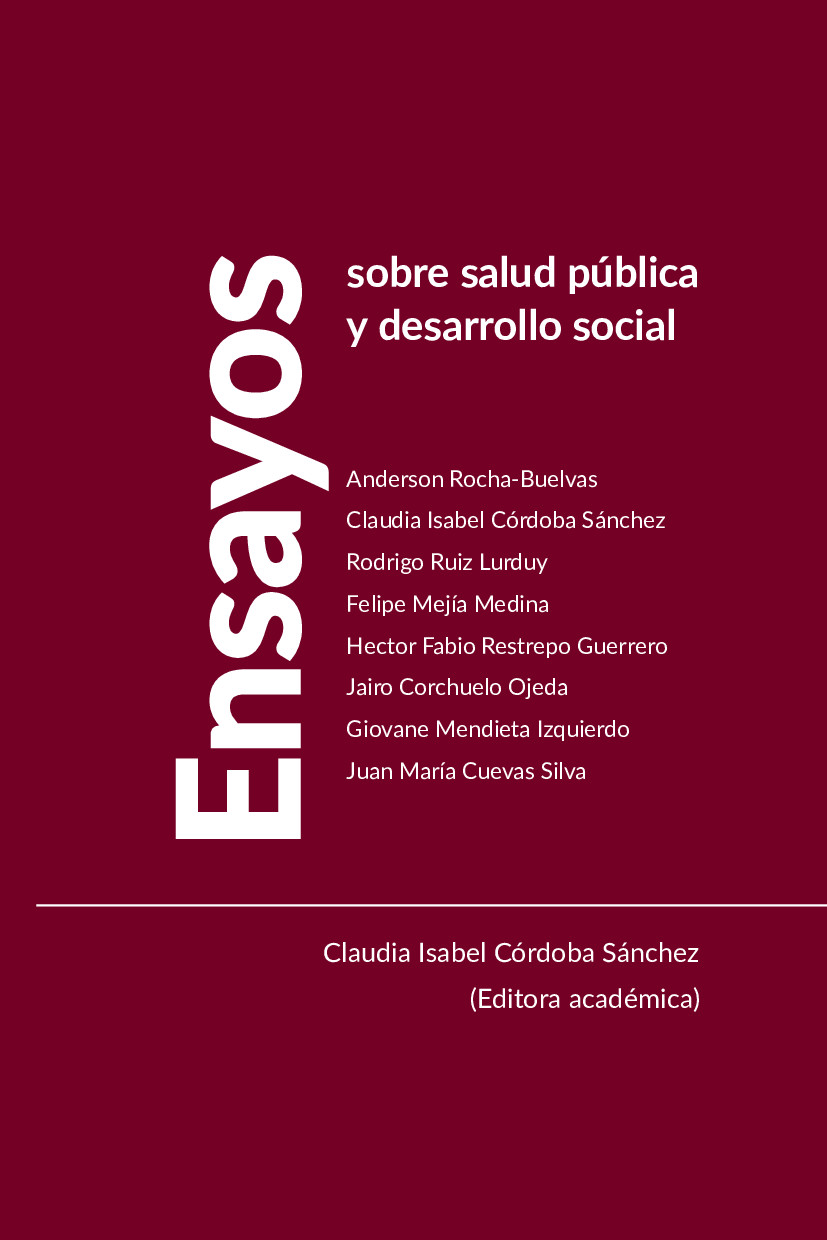Resumen
Introducción: el tratamiento con metadona constituye el estándar de manejo de adictos a heroína. Durante la rehabilitación los pacientes mejoran su estado de salud y parecen volverse inmunocompetentes; hecho atribuido al abandono de prácticas de riesgo, mejor nutrición y suspensión de la heroína, cuyo efecto inmunodepresor es conocido. Pero como la metadona es también antagonista del glutamato, podría tener actividad inmunoestimulante adicional.
Objetivo: comparar niveles séricos de las citoquinas FNT-a, IFN-y e IL-10, entre adictos a heroína en consumo activo (CA=32), adictos tratados con metadona (Met=20) y controles sanos sin historia de adicción (Cont=20).
Materiales y métodos: participaron 72 individuos de ambos sexos, mayores de edad, con pruebas serológicas para VIH/SIDA, hepatitis B y C negativas, que no utilizaran fármacos con efectos sobre el sistema inmune.
Resultados: no hubo diferencias entre los grupos respecto a género (91,7% hombres), edad (25,2 ± 8 años) y tiempo de abuso de heroína (5,3 ± 2,9 años). Todos los adictos reportaron consumo de otras drogas ilícitas: 96% marihuana, 79% cocaína/basuco y 52% otros psicoactivos. Ningún individuo del grupo Met seguía consumiendo cocaína/basuco, pero la mayoría continuaba el consumo de marihuana. Se encontraron diferencias significativas en los niveles de FNT-a (p=0,0004), IFN-y (p=0,014) e IL-10 (p=0,0001) entre los tres grupos estudiados; esta diferencia se conserva para las tres citoquinas cuando se comparan adictos con no adictos.
Conclusión: se encontró un patrón de producción de citoquinas séricas diferencial entre adictos y no adictos, pero no fue posible determinar un patrón de respuesta inmune inducido por metadona.
Licencia
Los autores deben declarar la no existencia de conflictos de intereses ya sea por motivos de financiación del proyecto del cual es resultado el artículo; así como por motivos intelectuales, académicos, morales e investigativos.
La Revista de Investigaciones Andina se acoge a las normas éticas para publicaciones dadas por el COPE: http://publicationethics.org/resources/code-conduct
Citas
2. Connock M, Juarez-Garcia A, Jowett S, Frew E, Liu Z, Taylor RJ, et al. Methadone and buprenorphine for the management of opioid dependence: a systematic review and economic evaluation. Health Technol Assess. 2007; 11:1-17.
3. Bosshart H. Morphine-mediated suppression of phagocytosis. Int Immunopharmacol. 2010; 10:264-5.
4. Börner C, Warnick B, Smida M, Hartig R, Lindquist JA, Schraven B, et al. Mechanisms of opioid-mediated inhibition of human T cell receptor signaling. J Immunol. 2009; 183:882-9.
5. Toskulkao T, Pornchai R, Akkarapatumwong V, Vatanatunyakum S, Govitrapong P. Alteration of lymphocyte opioid receptors in methadone maintenance subjects. Neurochem Int. 2010; 56:285-90.
6. Kraus J, Lehmann L, Börner C, Höllt V. Epigenetic mechanisms involved in the induction of the mu opioid receptor gene in Jurkat T cells in response to interleukin-4. Mol Immunol. 2010; 48:257-63.
7. Wang J, Ma J, Charboneau R, Barke R, Roy S. Morphine inhibits murine dendritic cell IL-23 production by modulating Toll-like receptor 2 and Nod2 signaling. J Biol Chem. 2011;286:10225-32.
8. Hutchinson MR, Shavit Y, Grace PM, Rice KC, Maier SF, Watkins LR. Exploring the neuroimmunopharmacology of opioids: an integrative review of mechanisms of central
9. immune signaling and their implications for opioid analgesia. Pharmacol Rev. 2011; 63:772- 810.
10. Nugent AL, Houghtling RA, Bayer BM. Morphine suppresses MHC-II expression on circulating B lymphocytes via activation of the HPA. J Neuroimmune Pharmacol. 2011; 6:130- 41.
11. Al-Hashimi M, Scott SW, Thompson JP, Lambert DG. Opioids and immune modulation: more questions than answers. Br J Anaesth. 2013; 111:80-8.
12. Eisenstein TK. Opioids and the immune system: what is their mechanism of action? Br J Pharmacol. 2011; 164:1826-8.
13. Wang X, Ye L, Zhou Y, Liu MQ, Zhou DJ, Ho WZ. Inhibition of anti-HIV microRNA expression: a mechanism for opioid- mediated enhancement of HIV infection of monocytes. Am J Pathol. 2011; 178:41-7.
14. Sauriyal DS, Jaggi AS, Singh N. Extending pharmacological spectrum of opioids beyond analgesia: multifunctional aspects in different pathophysiological states. Neuropeptides. 2011; 45:175-88.
15. Sacerdote P. Opioid-induced immunosuppression. Curr Opin Support Palliat Care. 2008; 2:14-8.
16. Shirzad H, Shahrani M, Rafieian-Kopaei M. Comparison of morphine and tramadol effects on phagocytic activity of mice peritoneal phagocytes in vivo. Int Immunopharmacol. 2009; 9:968-70.
17. Kvaratskhelia E, Maisuradze E, Dabrundashvili NG, Natsvlishvili N, Zhuravliova E, Mikeladze DG. N-methyl-D- aspartate and sigma-ligands change the production of interleukins 8 and 10 in lymphocytes through modulation of the NMDA glutamate receptor. Neuroimmunomodulation. 2009; 16:201-7.
18. Mashkina AP, Cizkova D, Vanicky I, Boldyrev AA. NMDA receptors are expressed in lymphocytes activated both in vitro and in vivo. Cell Mol Neurobiol. 2010; 30:901-7.
19. Capuron L, Miller AH. Immune system to brain signaling: neuropsychopharmacological implications. Pharmacol Ther. 2011; 130:226-38.
20. Boldyrev AA, Bryushkova EA, Vladychenskaya EA. NMDA Receptors in Immune Competent Cells. Biochemistry. 2012; 77:128-34.
21. Bart G. Maintenance medication for opiate addiction: the foundation of recovery. J Addict Dis. 2012; 31:207-25.
22. Soyka M, Kranzler HR, van den Brink W, Krystal J, Möller HJ, Kasper S; WFSBP Task Force on Treatment, Guidelines for Substance Use Disorders. The World Federation of Societies of Biological Psychiatry (WFSBP) guidelines for the biological treatment of substance use and related disorders. Part 2: Opioid dependence. World J Biol Psychiatry. 2011; 12:160-87.
23. Mattick RP, Breen C, Kimber J, Davoli M. Methadone maintenance therapy versus no opioid replacement therapy for opioid dependence. Cochrane Database Syst Rev. 2009, (3).CD002209. http://dx.doi. org/10.1002/14651858.
24. Newman RG. Opiate agonist treatment for addiction. Lancet. 2008; 372:1951-2.
25. D’Egidio PF, Bignamini E, De Vivo E, Leonardi C, Pieri MC, González-Saiz F, et al. METODO, A Prospective Observational Study to Assess the Efficacy and Tolerability of Methadone in Heroin-Addicted Patients Undergoing a Methadone Maintenance Treatment: Preliminary Results at Baseline Evaluation. Subst Use Misuse. 2013; 1-11. http://dx.doi.or g/10.3109/10826084.2013.800886.
26. Skeie I, Brekke M, Lindbaek M, Waal H. Somatic health among heroin addicts before and during opioid maintenance treatment: a retrospective cohort study. BMC Public Health. 8:43.
27. DeBeck K, Kerr T, Li K, Milloy MJ, Montaner J, Wood E. Incarceration and drug use patterns among a cohort of injection drug users. Addiction. 2009; 104:69-76.
28. Barta WD, Kurth ME, Stein MD, Tennen H, Kiene SM. Craving and self-efficacy in the first five weeks of methadone maintenance therapy: a daily process study. J Stud Alcohol Drugs. 2009; 70:735-40.
29. Sacerdote P, Franchi S, Gerra G, Leccese V, Panerai AE, Somaini L. Buprenorphine and methadone maintenance treatment of heroin addicts preserves immune function. Brain Behav Immun. 2008; 22:606-13.
30. Hutchinson MR, Somogyi AA. (S)-(+)- methadone is more immunosuppressive than the potent analgesic (R)-(--)-methadone. Int Immunopharmacol. 2004; 4:1525-30.
31. Sacerdote P, Franchi S, Panerai AE. Nonanalgesic effects of opioids: mechanisms and potential clinical relevance of opioid-induced immunodepression. Curr Pharm Des. 2012; 18:6034-42.
32. Carrigan KA, Saurer, TB, Ijames SG, Lysle DT. Buprenorphine produces naltrexone reversible alterations of immune status. Int. Immunopharmacol. 2004; 4:419-28.
33. Azarang A, Mahmoodi M, Rajabalian S, Shekari MA, Nosratabadi J, Rezaei N. T helper 1 and 2 serum cytokine assay in chronic opioid addicts. Eur Cytokine Netw. 2007; 18:210-14.
34. Riss GL, Chang DI, Wevers C, Westendorf AM, Buer J, Scherbaum N, et al. Opioid maintenance therapy restores CD4+ T cell function by normalizing CD4+CD25(high) regulatory T cell frequencies in heroin user. Brain Behav Immun. 2012; 26:972-78.

 PDF
PDF
 FLIP
FLIP




















